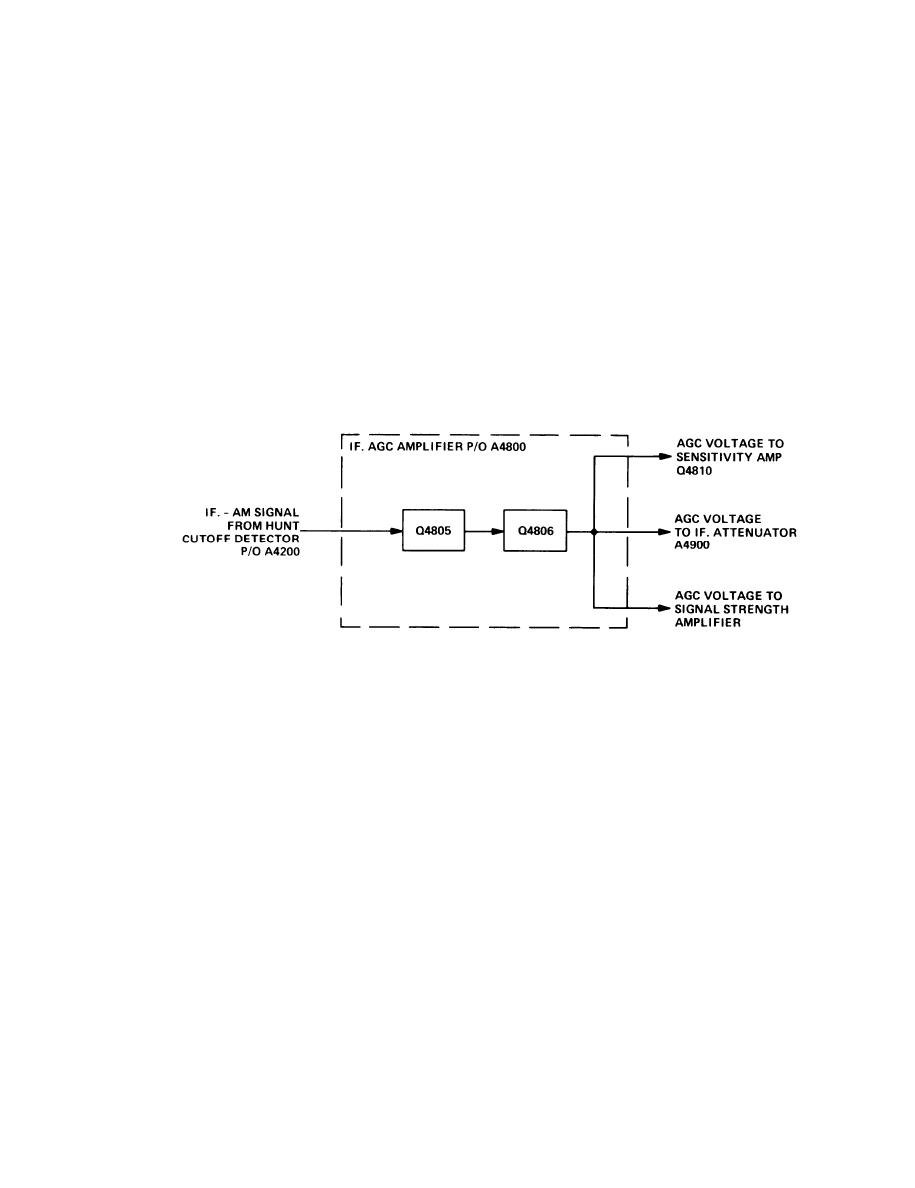 |
|||
|
|
|||
|
|
|||
| ||||||||||
|
|  TM 11-5820-670-30
1-53. HOMER-DETECTOR AMPLIFIER ASSEMBLY A4800. (CONT)
The homer if. signal from the hunt cutoff detector in the fourth if. amplifier is applied to rf agc amplifier
Q4807. With weak received signals, conduction of transistor Q4807 is slight which causes Q4808 to
conduct heavily and supply approximately 10 volts agc voltage to the rf attenuator (P/O module
A4500).
As the homer if. signal level increases, Q4807 starts to conduct harder and causes the conduction of
Q4808 to decrease. As the conduction of Q4808 decreases, agc output voltage also decreases.
Agc output voltage from the rf agc amplifier is the control voltage used to attenuate homing signals
flowing through the rf attenuator circuit in module A4500.
IF. AGC AMPLIFIER
EL1AT130
The homer if. signal from the hunt cutoff detector is applied to if. agc amplifier Q4805. With weak re-
ceived signals, conduction of transistor Q4805 is slight which causes Q4806 to conduct heavily and
supply approximately 10 volts agc voltage to if. attenuator A4900.
As the homer if. signal level increases, Q4805 starts to conduct harder and causes the conduction of
Q4806 to decrease. As the conduction of Q4806 decreases, agc output voltage also decreases.
Agc output voltage is the control voltage used to attenuate the homing signals flowing through if.
attenuator module A4900.
The agc voltage is also applied to the signal strength and sensitivity amplifiers located in module
A4800.
1-55
|
|
Privacy Statement - Press Release - Copyright Information. - Contact Us |